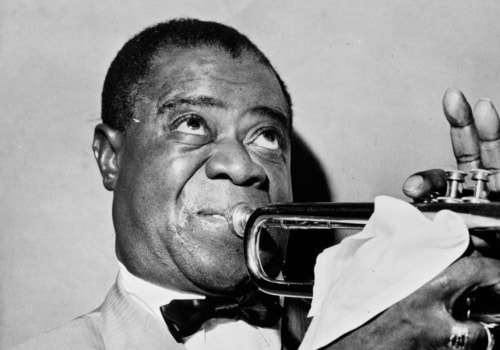Jazz is a genre of music that has its roots in the musical traditions of Africa and Europe, and it was born in New Orleans about 100 years ago. The jazz era truly began in the 1920s, when it became popular in the United States and Europe. This period, known as the “Roaring Twenties”, saw the emergence of black musicians such as Louis Armstrong, Duke Ellington and Count Basie, who achieved overnight success. The jazz era culminated with the historic Benny Goodman concert of 1938 at Carnegie Hall, which brought together musicians of various ethnicities to play jazz inside this sacred hall. New Orleans, near the mouth of the Mississippi River, played a key role in the development of jazz.
The city's population was more diverse than anywhere else in the South, and people of African, French, Caribbean, Italian, German, Mexican, and American Indian descent, as well as English ancestry interacted with each other. African American musical traditions mixed with others and jazz gradually emerged from a mix of ragtime, marches, blues and other types of music. Initially, jazz was mostly for dancing but later people would sit and listen. The evolution of jazz was led by a series of brilliant musicians such as Louis Armstrong, Duke Ellington (listen to Ellington in Duke's music class), Charlie Parker and Miles Davis. Jazz developed a number of different styles, including traditional jazz, swing (listen to Benny Carter's swing music in Benny's music class), bebop, fresh jazz and jazz-rock.
At the same time, jazz spread from the United States to many parts of the world. The five members of the Original Dixieland Jass Band took the elevator to the 12th floor of the Victor Talking Machine Company building on 38th Street in New York City on February 26th 1917. They were dressed in white shirts with buttoned top collars and no ties but wearing black tuxedos with shiny lapels. They played Livery Stable Blues for the microphones they expected; this song was silly but it marked a significant moment in the history of American music. W. C Handy's musical career began in the pre-jazz era and he contributed to the codification of jazz through the publication of some of the first jazz scores. In the 1960s and 1970s, many jazz musicians had only a basic understanding of Cuban and Brazilian music; jazz compositions that used Cuban or Brazilian elements were often referred to as Latin melodies without distinction between a Cuban son montuno and a Brazilian bossa nova. Contemporaries of the young Jazz Messengers such as Roy Hargrove, Marcus Roberts, Wallace Roney and Mark Whitfield were also influenced by Wynton Marsalis' emphasis on jazz tradition.
Jazz arrangements with a Latin A section and an oscillating B section became common practice with many Latin melodies from the standard jazz repertoire. For most of its history Afro-Cuban jazz had been a matter of superimposing jazzy phrasing on Cuban rhythms. Since only a limited number of American jazz records were released in Europe, European jazz has many of its roots in American artists such as James Reese Europe, Paul Whiteman and Lonnie Johnson who visited Europe during and after World War I.In 2001 Ken Burns' documentary Jazz premiered on PBS with Wynton Marsalis and other experts reviewing the entire history of American jazz up to that point. Nick La Rocca claimed that he invented jazz himself although Buddy Bolden had a much better claim or even Morton who was undoubtedly the first to write jazz as scores. With the advent of free jazz and other avant-garde events in recent days many veteran musicians argued that music that was not swing was not jazzy. However critic Joachim-Ernst Berendt argued that his terms of reference should be broader defining jazz as a form of artistic music that originated in the United States through the confrontation between blacks and Europeans. The most prominent figure in the beginning of this sacred jazz-movement was pianist and composer Mary Lou Williams known for her jazz masses.



